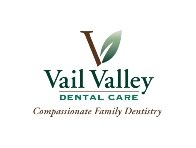In addition to good oral hygiene, including brushing and flossing, there are other ways to protect teeth from decay. Dental sealants can protect teeth and seal them off from decay-causing bacteria.
What are dental sealants?
Dental sealants are made of plastic and are applied to the chewing surfaces of the back teeth to prevent decay. The plastic fits into the depressions and grooves (pits and fissures) of teeth. The sealants protect tooth enamel from the bacteria and acids that cause decay.
Why can’t I just brush and floss?
While brushing and flossing help to remove food particles and plaque from smooth surfaces of teeth, toothbrush bristles often can’t reach into the teeth’s depressions and grooves. Sealants protect those areas and prevent food and bacteria from getting in.
How does the dentist apply a sealant?
Your dentist can apply sealants easily, and it takes only a few minutes to seal each tooth. The dentist first cleans the teeth that will be sealed, which may require the use of a dental drill to open the grooves of the teeth and determine if decay is present. Then he or she will roughen the chewing surfaces with an acid solution, which will help the sealant stick to the teeth. The dentist then “paints” the sealant on the tooth. It bonds directly to the tooth and hardens. Sometimes your dentist will use a special curing light to help the sealant harden.
Aren’t sealants just for kids?
Decay can begin early in life, so dentists usually apply sealants to children’s and teenagers’ premolars and molars to protect them. But sealants can protect adults’ teeth, too. Ask your dentist about sealants for your children or for yourself to see if they would be beneficial.
How long do they last?
As long as the sealant remains intact, the tooth surface will be protected from decay. Sealants hold up well under the force of normal chewing and usually last several years before a reapplication is needed. The risk of decay decreases significantly after sealant application. During your regular dental visits, your dentist will check the condition of the sealants and reapply them when necessary.
Are sealants safe?
Sealants are extremely safe, though some people may have an allergic reaction to the plastic. Talk to your dentist if you or your children have allergies so that he or she can provide the best treatment options.
Will my insurance pay for sealants?
Health insurance usually will pay for sealants for children’s and teenagers’ permanent molars. If the dentist suggests sealants for other teeth, he or she will tell you whether or not the costs will be covered. Be sure to check with your dental insurance company about your insurance plan as coverage may vary.
Seal the Deal
Your dentist can apply sealants easily, and it takes only a few minutes to seal each tooth.
Provided by the Academy of General Dentistry
For more patient information, check out our education video library: Vail Valley Dental Care Patient Education
Subscribe to:
Post Comments (Atom)


Flossing and brushing your teeth are two of the most important hygiene measurements that a parent should teach his child. You should know that it is equally important that your child visits a dentist regularly in order to ensure a proper oral hygiene and prevent teeth problems.
ReplyDeleteColorado children dentists